Published on April 18, 2013
Seventy one years ago today in aviation history, on April 18, 1942, sixteen B-25B Mitchell bombers, each with a five man crew, took off from the decks of the US Navy aircraft carrier Hornet and made their way over 600 miles to Japan where they bombed and strafed a series of assigned military targets. A mix of 500 pound general purpose bombs and smaller incendiaries were used in the Raid. The damage inflicted was materially light, however, but the morale boost to America was critically important at that time, coming on the heels of nothing but bad news since the Japanese had attacked Pearl Harbor four and a half months earlier.
Usually, it is there that the analysis of the importance of the Doolittle Raid concludes, defining it as a tactical surprise that had the strategic benefit of invigorating Americans with a new hope of victory. But what if that conclusion is incorrect? What if the Doolittle Raid actually did have wider, unrecognized strategic impact? We believe that it did and welcome you to consider an alternative understanding of history, one that is fully backed by the evidence and facts at hand.
The Instabilities of History
The truths that historians hold firmly have both validity and yet at the same time, they can be self-limiting and curtail wider understandings. First and foremost, historians build on the knowledge of others, adding to and refining our understandings. Some events, like Pearl Harbor, the Doolittle Raid, the Battle of Midway, the invasion of France on D-Day, are studied so extensively that, after all these years, the landscape becomes fixed. The facts are known, cataloged and examined — they do not change — although we can choose to place our emphasis on the known events in varying ways. In other words, there are facts that are known and widely repeated and there are facts that are known but rarely considered to have wider implications and impacts. History is therefore constructed not solely based on the facts, i.e., what actually happened, but rather on our perceptions of events.
In constructing our accepted views of history, we become so fixated in a single truth that we are led to ignore alternate interpretations of events. This is particularly true of the Doolittle Raid. Certainly, many make claim that the raid was largely symbolic, even if unquestionably heroic. They base their viewon the conclusion that the Doolittle Raid had little or no effect on the larger scale of warfare that followed, its individual engagements, strategies, battles and outcomes — it was a tactical raid, with limited or even no strategic impact.
It is that set of assumptions that we seek to challenge. Ultimately, we believe too that the facts are there to support an alternative interpretation of history that finally does full justice to the extraordinary accomplishments of the Doolittle Raiders.
Contextualizing Alternative Interpretations
In this short article, we stake claim that the Doolittle Raid did have a far greater strategic impact on the war in the Pacific than most realize. As well, we highlight that some assumptions about the impacts of the events themselves are taken as “common knowledge” and are often repeated, even if they are incorrectly contextualized. Among these, the following “surprises” both point to how the impact of events is often misunderstood and improperly contextualized, leading us wrongly to discount the strategic importance of the Raid:
- Common Understanding: The Doolittle Raid came as a complete surprise to the Japanese.
Actual Fact: Through intelligence operations and code breaking, the Japanese knew that the American task force that carried out the raid was “on the loose” in the Pacific Ocean. The Japanese military suspected that some sort of raid on the Japanese home islands was a serious possibility. The Japanese deployed picket ships to detect and warn of the approach of any American task force so as to aid in intercepting and destroying the American task force. One of these ships, the No.23 Nitto Maru spotted the task force and radioed a warning back to Japan — it was thereafter sunk by USS Nashville, but ended up forcing the Doolittle Raiders to take off 10 hours earlier and 170 miles farther away from Japan than planned. Likewise, the advance notice of the planned attack resulted in the IJN’s Second Fleet, which included five aircraft carriers, having delayed a planned port call for scheduled maintenance and refit so as to find, pursue and destroy the American fleet. Instead, even as the Hornet and the American task force sailed west toward Japan, the Second Fleet was heading east hoping both to stop the aerial attack and to destroy the American task force. Both missions failed. - Common Understanding: The Doolittle Raid caused light and rather inconsequential damage to Japan, which was quickly repaired.
Actual Fact: At least one of the targets hit, a light aircraft carrier that was under construction at Yokohama called the Ry?h?, was hit by a 500 lb bomb and several incendiaries. While the damage was repaired, it did delay the carrier’s readiness slightly, and the ship finally joined the IJN fleet in December 1942; had it been available earlier, it could have played a larger role in the engagements of the summer and autumn months of 1942, though whether the ship would have been brought into service that much earlier remains an open question. - Common Understanding: The strategic costs to the Japanese associated with Doolittle Raid were nominal and did little to affect the wider conflict of the war in the Pacific.
Actual Fact: In the wake of the Doolittle Raid, the Japanese military committed a huge volume of resources, manpower and intelligence assets to address matters in China directly relating to the American attack. A mass scale hunt for the American airmen who took part was undertaken, which also involved thousands of Japanese soldiers in carrying out an extensive retaliation and retribution campaign on China’s citizens. Over 250,000 Chinese were slaughtered in the process, chemical warfare attacks were undertaken on populated areas, and the entire network of airfields within China which could have served the Americans (though they could have also served the Japanese!) were torn up to help prevent a recurrence of the Raid. That effort required massive logistics support and a huge volume of manpower as well as the use of much-needed war materiel, resources, ammunition, fuel and other equipment that could have been put to better use in the wider war. - Common Understanding: The Japanese were unprepared for air raids on Japan itself and thus the attacks came as a shock to the people of Japan.
Actual Fact: The shock was felt, but rather mostly at a military command level. Mistakes had been made in predicting American military moves and defending against the attacks. The political leadership lost some faith in the promises of the Japanese military leadership. As for the Japanese people, in actual fact, at the time they were regularly drilled in civil air defense, taking cover in bomb shelters during routine exercises, even if the senior officials believed that the mainland was probably out of reach of attack. The very morning of the Doolittle Raid, some locations that were attacked had already carried out a civil air defense exercise! The Japanese people thereafter did not lose faith in their government, but rather demanded that more be done to defend the home islands. They felt that the previously practiced air defense drills were justified, but demanded that more resources be committed to defense as a result. - Common Understanding: In terms of strategic decision making as it related to the wider war in the Pacific, the Doolittle Raid did not influence Japanese political or military leaders to alter their plans and courses of action, except to perhaps reinforce the home islands for better defense in the event of another American raid.
Actual Fact: The Doolittle Raid and subsequent failure of the IJN Second Fleet to find, engage and successfully defeat the American carrier task force had much wider implications. Politically, the Imperial Japanese Navy was placed in a position of having to engage and succeed against the Americans in the near term. The public and political view that if American land-based bombers could attack Tokyo then Japan was more vulnerable than many had believed was matched by the Japanese military’s own assessment that such vulnerabilities were not going to be easily reduced. This created a strong incentive to act swiftly and boldly. Thus, the ultimate outcome of the Doolittle Raid turned out to be of extraordinary supreme strategic importance — forced into stronger action in the wake of the American attack, Admiral Yamamoto made the key decision to move ahead quickly with a more robust attack on Midway Island. That decision received broad support, perhaps in large part justified and enabled by the changed political and military landscape created by the Doolittle Raid itself.
Conclusion
Each of the five points raised above shed new light on the real strategic impact of the Doolittle Raid. Above all, the decision by Admiral Yamamoto due to the Raid to proceed immediately with an attack against Midway had the greatest strategic impact. The events that followed in the Battle of Midway are considered to have been the “turning of the tide” of the war in the Pacific. That view is not strictly an American one, as many Japanese senior officers also recognized that with the losses suffered things had changed in the war, irrecoverably putting a complete and absolute victory in the Pacific permanently out of reach. From that point onward, the role of the Japanese military shifted steadily to defense, with the leadership hoping that if enough losses could be inflicted against the Americans and her Allies, their advance could be curtailed and a settlement reached that could save at least some of Japan’s gains.
In the aftermath of the Doolittle Raid, Lt Col Doolittle worried that he would return to disgrace and a court martial. His view was not unjustified — all sixteen of his aircraft were lost; of the 80 airmen who flew in the Raid, eleven were captured and/or killed; and the other airmen of his unit were scattered, never to be reformed. Yet as we know, Jimmy Doolittle was welcomed instead as a returning hero, elevated two ranks to Brigadier General and awarded the Medal of Honor. All of his men (some posthumously) received the Distinguished Flying Cross, the Army’s second highest award for valor in combat.
In the final analysis, it seems that his Medal of Honor was not only well-deserved, but, given the later ramifications and true strategic impact of the Doolittle Raid, perhaps Jimmy Doolittle should have earned that Medal of Honor with an Oak Leaf Cluster.
Today’s Aviation Trivia Question
In the Doolittle Raid, one of the B-25B Mitchell bombers (#40-2242 of the 95th Bomb Squadron) after dropping its bombs on Tokyo, was so low on fuel that its pilot, Capt. Edward J. York, made a decision to turn to the northwest instead of proceeding to China. He landed at Vladivostok in the Soviet Union. The Soviets, who were allied with the US in the war in Europe, interned both the plane and crew. While the crew was eventually repatriated, the B-25B was not — what happened to the plane?

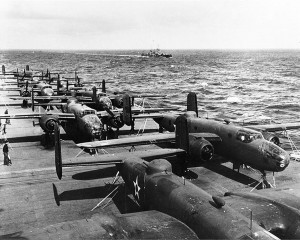
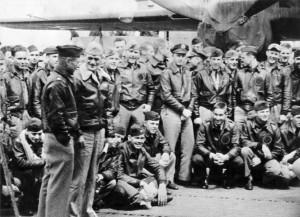
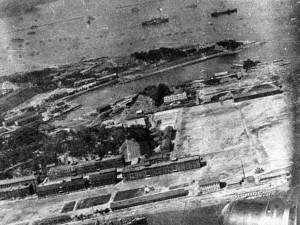
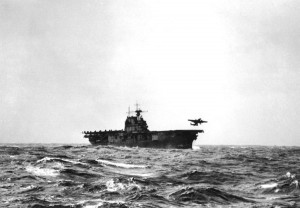
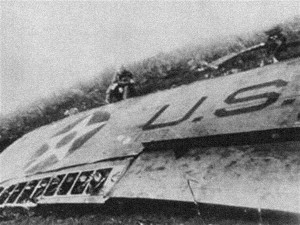
Rumor had it all over the Soviet Union after the war. But it has not resurfaced as far as I know.
Russia manufactured the Wright 2600 later on. Is it possible they used those engines to make the tooling necessary for the manufacturing?
What kind of ALLY would act like the Soviet Union? The US even helped them with Lend Lease, and that is the thanks we got?
——————————————————————-
Back to the article, there must have been a LOT of courts-martial, given that many an operation had at least the number of casualties of the Doolittle Raid. The Raid itself was known to be likely a one way suicide mission or at least a mission, whereby they were anything but guaranteed to succeed.
The Doolittle Raid can be called a rush job, lacking basic planning. The underlying motive was short-sighted revenge and an ego trip. If Doolittle (how appropriately named) was in charge and responsible, he would have ensured that the aircraft involved were fit for purpose and adequately modified for the so-called mission. Instead of fitting MILSPEC auxiliary fuel tanks to the B-25s he allowed unproven, rectangular, rigid tanks and non-approved fittings to be installed which leaked all the extra fuel before reaching the coast of Japan. Likewise, none of the navigational instruments operated and didn’t even include a compass. JATO was well-proven by 1942 so why not use it? So many blunders and plain oversights should have given rise to court martialling Doolittle when he returned primarily for losing eight brave airmen and all 16 aircraft, not to mention the slaughter of over a million Chinese. Fifty Japanese were killed and a few dollars worth of ground installations. Any aircraft mechanic with a year’s experience would realize the aircraft were not prepared for so much as a test flight much less serious military action.